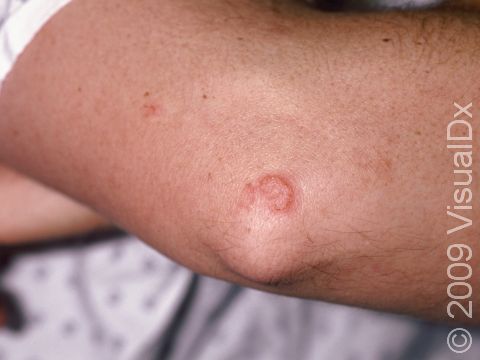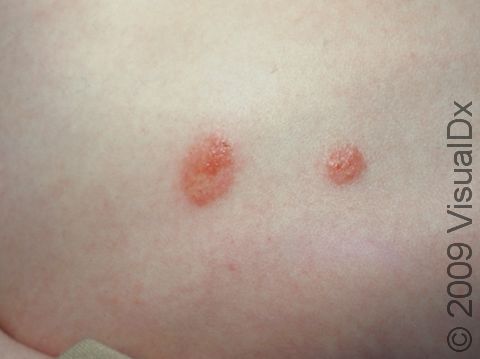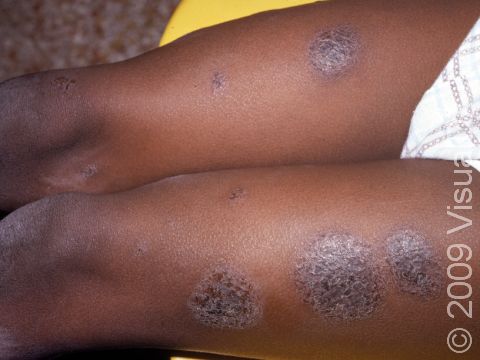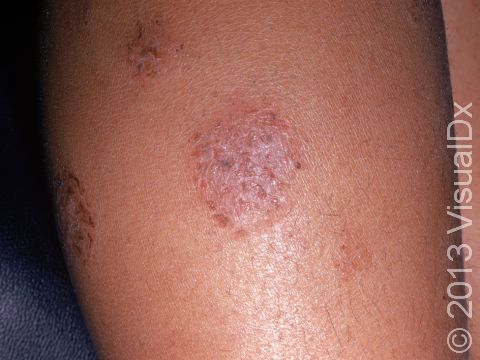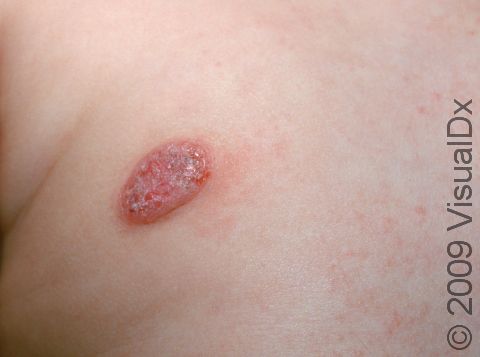Nummular Dermatitis
Nummular dermatitis is a type of inflammatory skin condition (eczema) that appears as coin-shaped sheets of scaly skin.
- The cause of nummular dermatitis is not certain, but the condition may be triggered by frequent bathing, use of irritating and drying soaps, and exposure to irritating fabrics such as wool.
- People often show the same signs and symptoms that occur with eczema.
- Nummular dermatitis is an itchy rash that can be severe, and affected children can be irritable.
- It usually occurs in the winter and often becomes worse at that time.
- Nummular dermatitis can be long-lasting (chronic) with periods when it is worse alternating with periods of improvement (a waxing and waning course).
Who's At Risk?
Nummular dermatitis may affect people of all ages, but it is most common in older men.
Signs & Symptoms
Nummular dermatitis is most commonly found on the trunk and/or the arms and legs. Round or coin-shaped, pink-to-red sheets of surface skin (plaques) appear, often with small cracks (fissures) or breaks in the surface skin inside the affected area.
Self-Care Guidelines
The most important self-care measure for treating nummular dermatitis is to keep the skin moist. Help your child try the following:
- Non-soap cleansers such as Cetaphil® or moisturizing soaps such as Dove®.
- Thick moisturizers such as petroleum jelly (Vaseline®), Aquaphor® ointment, Eucerin® cream, CeraVe® cream, or Cetaphil cream, applied to damp skin after daily bathing.
- Measures to reduce exposure to heat, humidity, detergents/soaps, abrasive clothing, chemicals, smoke, and stress.
- Fragrance-free laundry detergent.
- Keep your home humid with a humidifier or by setting out bowls of water, especially in the bedroom.
- Over-the-counter 1% hydrocortisone cream twice daily or lotions with menthol and phenol (Sarna® lotion) to relieve itching.
Treatments
Your physician may:
- Recommend the above self-care measures.
- Prescribe medium- to high-potency topical steroids to apply to the affected areas twice daily.
- Prescribe oral antihistamines to help relieve itching.
- Prescribe oral or topical antibiotics if an infection is suspected.
Visit Urgency
See your child’s doctor or a dermatologist if you see no improvement with self-care measures or if the condition gets worse.
References
Bolognia, Jean L., ed. Dermatology, pp.218-223. New York: Mosby, 2003.
Freedberg, Irwin M., ed. Fitzpatrick’s Dermatology in General Medicine. 6th ed., pp.1194-1196. New York: McGraw-Hill, 2003.
Last modified on August 16th, 2022 at 2:45 pm

Not sure what to look for?
Try our new Rash and Skin Condition Finder
